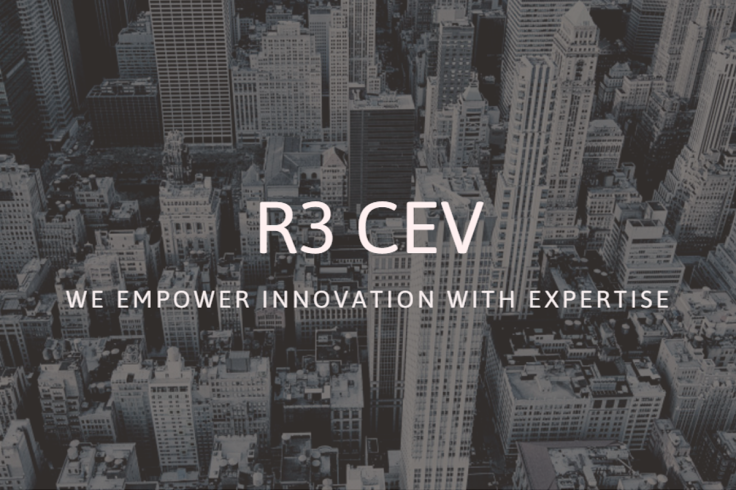Blockchain, Bitcoin and the rise of banks as shared ledger providers

Over the past several months some vocal elements of the cryptocurrency community have claimed that shared ledgers, specifically those designed for large enterprises, are little more than recreations of corporate intranets. They further claim that there is only one true sharable cryptographic ledger, and that it is Bitcoin.
A number of entrepreneurs, investors and enthusiasts also believe that those looking to build customized solutions for financial institutions are simply using the term "blockchain" or "distributed ledger" as a 'wink-wink, nod-nod' euphemism or code word for "Bitcoin."<sup>[1]
This is simply not true. While social media venues have concocted a host of conspiracy theories, the reality is that global financial institutions are each independently kicking the tyres on a variety of networks and closed-off forks of such systems as Ethereum, Bitcoin, Ripple, and many others.
What does this have to do with banks as shared ledger providers? To answer that, let's look at what the internet really is.
A series of tubes
Topographically the internet is a patchwork of disparate networks — such as private internet service providers (ISPs) and content delivery networks (CDNs) — that connect to one another. There is no single, monolithic "public internet."<sup>[2]
Over the past 30 years these ISPs have created industry standard peering agreements which define their relationship with one another in terms of bandwidth, quality of service, allowable content, plus a variety of other characteristics.
To accomplish reliable connectivity, over the past several decades a number of neutral protocols (e.g., FTP, HTTP, TCP/IP) have been created which allow participants on one network (ISP) to connect and transfer data to and from another network (ISP).<sup>[3] Small ISPs connect to bigger ISPs all the way up to Tier 1 backbone providers.
While many cryptocurrency enthusiasts liken non-public blockchains or distributed ledgers to walled gardens such as AOL, the reality is that while AOL's original business model disappeared, the organization did not. AOL still exists (as part of Verizon) and its members can in fact connect to other hosts and services beyond AOL vis-a-vis neutral protocols such as TCP/IP.
What many also fail to remember is that in order to use "the internet," many jurisdictions require participants to submit identification information to governmental organizations. For instance, in the US a variety of national, state and local governmental bodies monitor and enforce specific regulations surrounding permissible content; ISPs are often required to hold certain identification information of their customers in the event that a violation occurs.
Similarly, the largest ISPs in the US, such as Comcast, CenturyLink, Cox, Time Warner Cable and AT&T, all have specific terms of services and end-user licensing agreements. The violation of these terms can result in service suspension or termination. So despite the fact that the telecommunications industry is highly regulated, and that these permission-based communication networks have existed more-or-less in their current form for years, no one is currently calling Comcast a "walled garden" akin to AOL circa 1993.<sup>[4]
Why not? Because Comcast users have the ability, via peering agreements and neutral protocols, to send and receive data and information to users on other ISPs. So, what does this have to do with shared ledgers?
Shared Ledger Providers (SLPs)
Financial institutions such as banks each have at least one ledger of record, and often times dozens. The largest banks sometimes have a few hundred ledgers due to acquisitions of other products and companies over time.
Consequently, while there are existing ways for financial institutions to share and reconcile information with one another — as I recently described in American Banker — that process today requires the utilization of trusted third, fourth and fifth parties in the handling and processing of proprietary financial information. This reconciliation and reporting process is often creaky, expensive and slow.
Why? Because there is no turnkey cryptographic shared ledger solution fit for purpose to the needs of financial institutions.<sup>[5]
Does it have to stay that way? Maybe not. As Richard Brown, head of technology at R3CEV, concisely envisions: "Through one global logical ledger, financial firms will move from systems-of-record at the level of the firm to an authoritative systems-of-record at the level of a market. These records would sit logically outside each firm on a shared ledger, accessible only to anybody (or anything, such as an authorized smart contract) with an interest in the assets and agreements they manage."
Recall that banks collectively spend a large amount of money to keep global commerce alive. For instance, according to Deutsche Bank<sup>[6]: Measured as a percentage of revenues, financial services firms spend more on IT than any other industry. Banks' IT costs equal 7.3% of their revenues, compared to an average of 3.7% across all other industries surveyed.
And according to Celent<sup>[7]: Total bank IT spending across North America, Europe, and Asia-Pacific will grow to $196.7bn in 2015, an increase of approximately 4.6% over 2014.
The Bitcoin blockchain provides a probabilistic solution to a specific customer base involving just one asset.<sup>[8] It was not designed to provide specific functions and settlement finality for the cornucopia of use-cases and registered assets managed by regulated financial institutions. It could be argued that its design assumptions were in fact the exact opposite.
If the G3F narrative germinates, what is an end result in a world where cryptographic ledgers-as-a-service, notaries-as-a-service and timestamping-as-a-service actually exist through a shared financial fabric?
Eventually banks could automate portions of their middle and back offices with what Brown describes as a "global logical ledger." One that uses elements of the "blockchain" toolkit and dramatically reduces the reconciliation process.
Perhaps in this process they would become Shared Ledger Providers (SLPs) for end users, much like ISPs have acted as on-ramp and off-ramp gateways to other private networks. And from this firm non-probabilistic foundation, open innovation can take root, enabling the creation of new asset classes and utility for all stakeholders.
Tim Swanson is director of market research at R3CEV and lives in the San Francisco Bay Area. Twitter: @ofnumbers
<sub><sup>[1] See: The great pivot? Or just this years froth?
[2] See also the Submarine Cable Map 2015 from TeleGeography
[3] See Dave Hudson's comments in A dissection of two Bitfury papers and Section 8.
[4] Note: this is not an endorsement of existing services or policies.
[5] In the event there is more than one globally used distributed ledger or blockchain, atomic cross-ledger settlement may be important as well. Two proposals have been: A Protocol for Interledger Payments by Stefan Thomas and Evan Schwartz and An architecture for the Internet of Money by Meher Roy
[6]IT in banks: What does it cost? from Deutsche Bank
[7]IT Spending in Banking: A Global Perspective<sub> from Celent
<sub>[8]Bitcoin Blockchain for Distributed Clearing: A Critical Assessment by Robert Sams
© Copyright IBTimes 2025. All rights reserved.






















